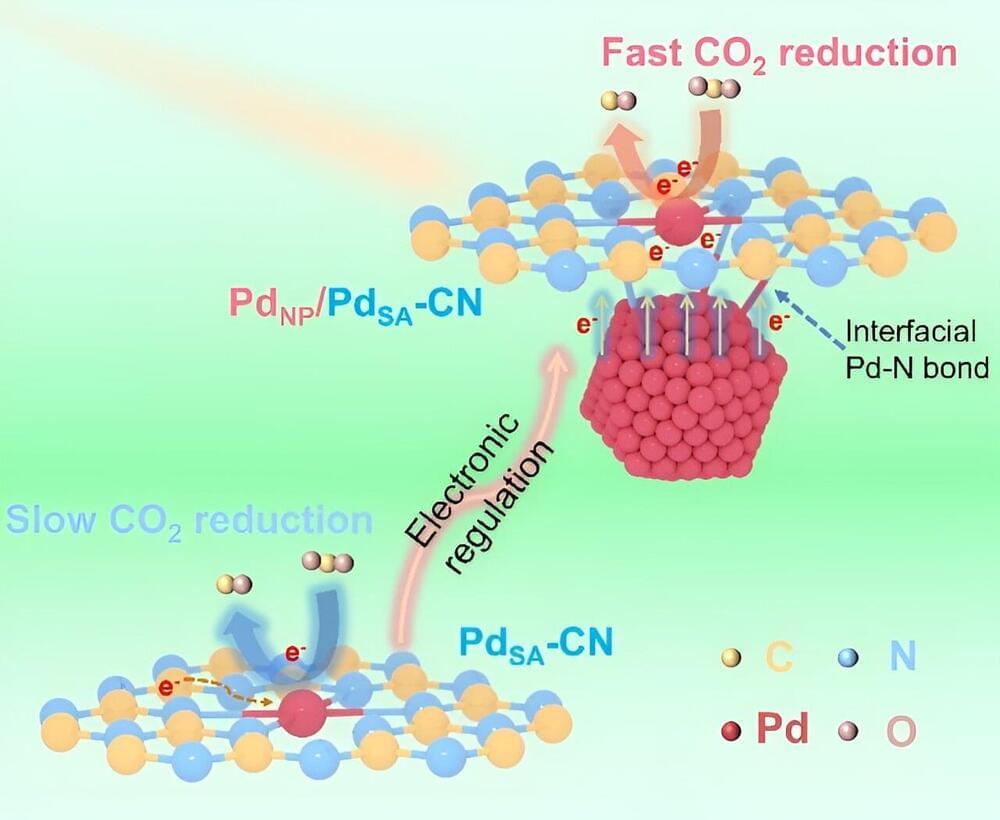The challenge of regulating the electronic structures of metal single-atoms (M-SAs) with metal nanoparticles (M-NPs) lies in the synthesis of a definite architecture. Such a structure has strong electronic metal-support interactions and maintains electron transport channels to facilitate carbon dioxide photoreduction (CO2PR).
In a study published in Advanced Powder Materials, a group of researchers from Zhejiang Normal University, Zhejiang A&F University and Dalian University of Technology, revealed the engineering of the electron density of Pd single atoms with twinned Pd nanoparticles assisted by strong electronic interaction of the atomic metal with the support and unveiled the underlying mechanism for expedited CO2PR.
“As one of the most promising CO2PR semiconductors, polymeric graphitic carbon nitride (g-C3N4) featured with sp2 π-conjugated lamellar structures can offer electronegative nitrogen atoms to anchor M-SAs, forming active metal-nitrogen moieties (M–Nx),” explained Lei Li, lead author of the study. “However, stable M–Nx configurations forbid tunability of electronic structures of M-SA sites.”
